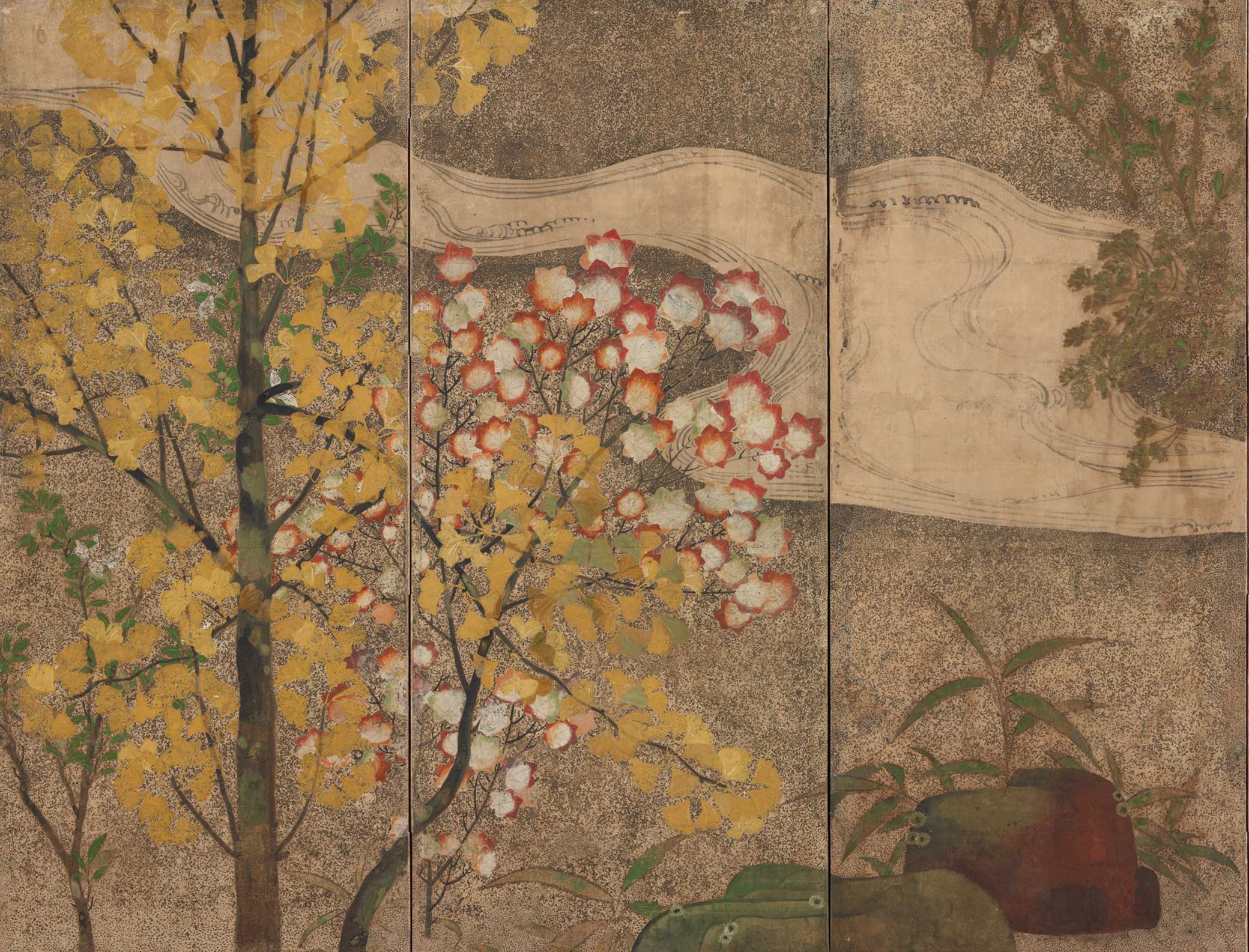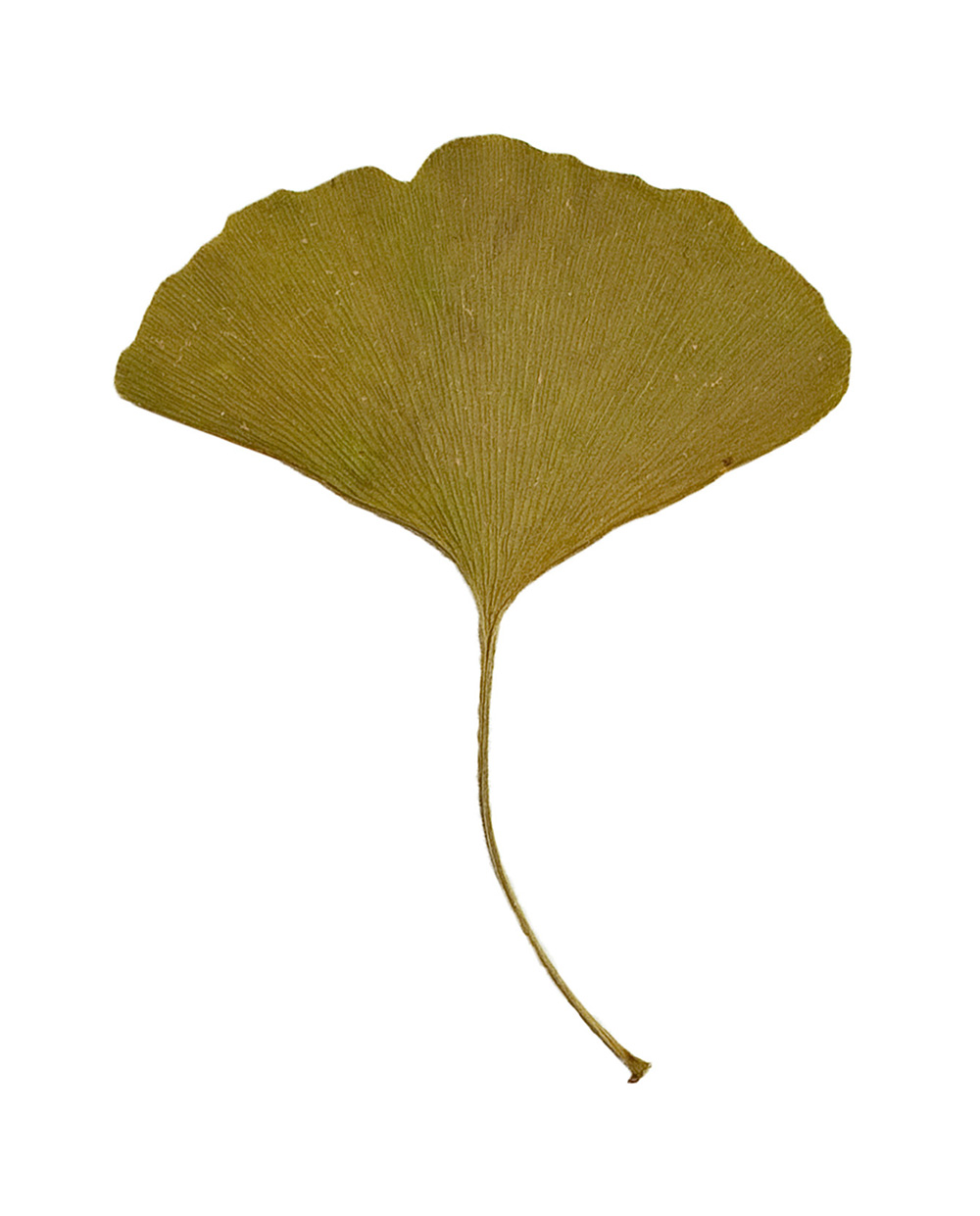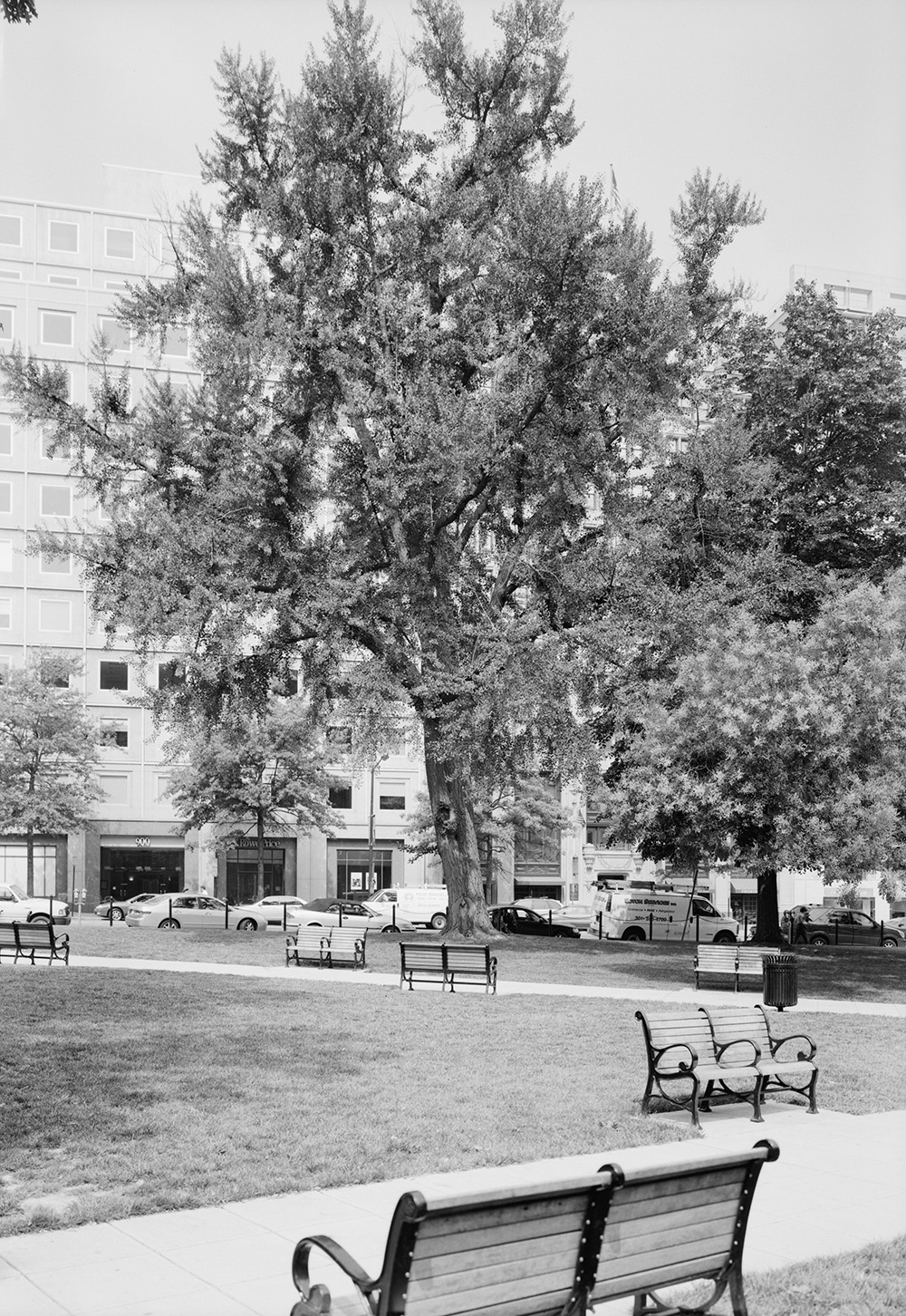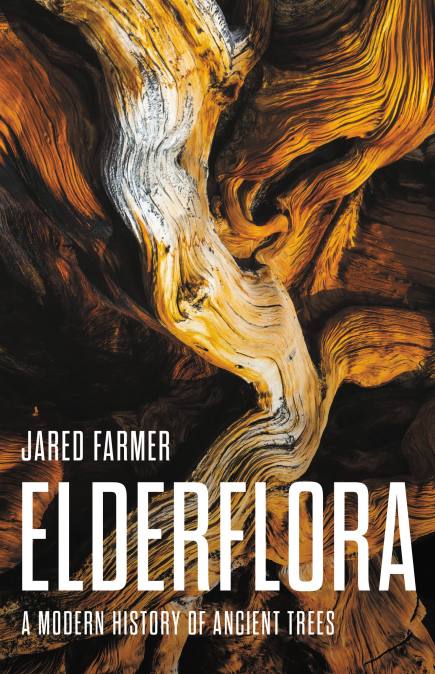
Autumn Trees and Grasses by a Stream (detail), Japan, circa eighteenth century. The Metropolitan Museum of Art, Rogers Fund, 1915.
Who first noticed a ginkgo and through which sensory organ—nose or eye? It happened long ago in far eastern Asia, somewhere south of the Yangtze. It likely happened in autumn. In that season, a human might have smelled the decomposing seedcoats, with their olfactory resemblance to carrion. Or her eye might have spotted the leaves—bilobed and yellow like no other, with a matchless synchronized drop. In the past thousand years—roughly 0.001 percent of its life as a species—Ginkgo biloba spread from China throughout the world. Or, more accurately, respread. In the geologic past, many species of the ginkgo division prospered throughout the Northern Hemisphere.
These ginkgophytes were, in their evolutionary heyday, the foremost innovators of the plant kingdom. They could shed leaves in winter, go dormant in low-light seasons, switch between stub growth and branch growth depending on conditions, and resprout from lignotubers—energy-storing roots—after disturbances. On a prior planet with relatively few tall plants and no fast-growing angiosperms, ginkgophytes achieved dominance as generalists.
As Darwin said, “rarity precedes extinction,” but the duration of rarity varies greatly. Ginkgo is a temporal outlier. Ginkgophytes survived multiple mass-extinction events and outlived original seed dispersers, which might have been carrion-eating animals attracted by the sweet-rotten smell of the fleshy seedcoats. After a long period of glory in the Mesozoic era, ginkgophytes declined in the Cenozoic and dwindled to one species by the ice ages. Ginkgoes disappeared from North America, then Europe, and finally Japan, becoming, by the Pleistocene epoch, mountain refugees in China.
In the late Holocene, Chinese people began functioning as Ginkgo’s disperser. In a text from the eleventh century, a Song dynasty poet described the process by which the “silver apricot” traveled from the highlands to the lowlands: “First it came in silk bags as a tribute”; then the noble prince “brought roots from afar to bear fruit in the capital”; and, by and by, the resulting tree’s first nuts were “presented to the throne in a golden bowl.” In short, ginkgo seeds entered Chinese cuisine as imperial appetizers. By the succeeding Yuan dynasty, orchardists grew “white fruit” commercially in the Yellow River drainage. From China, the “duck-foot” tree spread to Korea, and from Korea to Japan. Ginkgoes cannot serve as crop plants like true nut trees. Their seeds are semi-toxic. Beyond a certain limit, this delicacy becomes a poison. Because of their active ingredients, ginkgo seeds attracted the attention of Chinese doctors, who theorized on their correspondence with earth elements and human organs. By the seventeenth century—quite late—the seeds became standard components of Chinese materia medica. Doctors prescribed ginkgo porridge for lung-related ailments that depleted vitality. The leaves of the tree did not undergo comparable medicalization.
During the Edo period of Japan (1603–1868), the seeds, branches, and leaves of the ginkgo acquired new associations. Japanese artists led the way in aestheticizing the unmistakable leaf. The bilobed shape appeared on crests, ceramics, kimonos, and coiffures—including a stylized topknot for sumo wrestlers. Meanwhile, in Japanese cookbooks, ginkgo seeds appeared as common vegetable ingredients. Before or after a big meal, people ate them separately as a digestif. Whereas ginkgo seeds regulated the lungs of Chinese, they regulated the stomachs of Japanese.
Also in Japan, and only in Japan, select branches on ginkgoes corresponded to mammary glands. Old ginkgoes sport hanging growths—aerial roots—called “breasts” (chichi) in Japanese. Chichi-bearing ginkgoes became sites of propitiation for women who desired assistance with childbirth or lactation. Not coincidentally, such old ginkgoes typically grew in gardens under sacred guardianship. Following the lead of sanctuaries in China and Korea, the keepers of Buddhist temples and Shinto shrines in Japan landscaped with ginkgoes.
From early modern Japan, knowledge of ginkgo traveled to the West. A German naturalist with the Dutch East India Company observed the species in Nagasaki and bestowed upon it its unpronounceable name. “Ginkgo” was wrong—it should have been Romanized as ginkio or ginkjo or ginkyo—but the error became fixed once Linnaeus adopted it. The Swedish taxonomist didn’t have access to the plant’s reproductive organs, so he placed Ginkgo biloba in the appendix as a “Planta Obscura.” Despite the isolationism of Japan, collectors from Europe and the United States obtained seeds and cuttings for wealthy patrons, including the Duke of Weimar. Inspired by the “tree from the Orient,” the duke’s chief adviser, Goethe, wrote a love poem about the secret of the bilobed leaf—two parts as one.

While gardeners planted ginkgoes, geologists exhumed ginkgo-leaf fossils in unlikely places, including northern Europe. The obscurity and secrecy of this tree ran deeper than Linnaeus or Goethe realized. Botanists puzzled over the evolution of early land plants: Did ginkgoes branch from ferns? And did conifers then derive from ginkgoes?
The critical evidence arrived in the 1890s, when University of Tokyo botanist Sakugorō Hirase observed the microscopic union of male and female gingko. To his surprise, the spermatozoid arrived at the ovum by swimming in fluid. This discovery of motile sperm—an evolutionary holdover from the watery origins of plants—secured ginkgo’s status as a primordial species, a genus of one. A decade later, when paleobotanist (and future birth control activist) Marie Stopes visited Tokyo, she witnessed the “grand excitement” at the university during ginkgo’s brief fertilization period. Stopes spent three days “hunting Ginkgo sperms” under the magnifier. “It is most entertaining to watch them swimming,” she wrote in her journal. “Their spiral of cilia wave energetically.” After Hirase’s discovery, scientists began speaking of ginkgo as the “missing link” or “connecting link” between ferns and conifers, and a “living link” to the age of dinosaurs. Albert Charles Seward, a noted geologist, applied Darwin’s concept “living fossil” to G. biloba. It became conventional to call ginkgo the “oldest tree species in the world” or the “oldest living genus.” Recent discoveries of fossilized ovulate organs—a better measure of evolutionary change than leaves—suggest that ginkgo has been morphologically stable for some 120 million years.
Do age-old genera contain age-defying chemicals? A German homeopathic company, Schwabe, has profited from this wishful correspondence. In the 1960s Schwabe developed two botanical extracts. One they advertised with giant sequoia; the other they literally made from ginkgo leaves. Patented as “Egb 761,” this extract became the top-prescribed herbal medicine in Germany—where the publicized association with Goethe helped—and later the top-selling supplement in the United States. The efficacy of Egb 761 remains inconclusive. Proponents make unsubstantiated claims that ginkgo trees live longer than a millennium and that ginkgo has been used in traditional Chinese medicine for five thousand years.
Chinese horticulturists grow ginkgoes for nuts, not leaves. The nuts are meant primarily for food, not medicine. Bitter when raw, they become tasty with roasting. Fairgoers snack on them during the Mid-Autumn Festival, much like Europeans eat chestnuts at Christmas markets. In China, ginkgo-leaf extract is a niche product, and discerning consumers prefer the German product.
To meet the global demand for its “mental sharpness” pills, Schwabe operates a plantation in South Carolina, the largest ginkgo forest since the Tertiary period. Every summer ten million trees are defoliated by machine, and every five years cut to the ground. They receive no sabbatical. Through violent rejuvenation, these piedmont plants have taken the form of subalpine krummholz, with immense root systems supporting leafy stubs. “It’s brutal,” says Peter del Tredici, who serves as Schwabe’s horticultural adviser. “Morphologically, we’ve made them into ancient shrubs. That these plants have lasted thirty-five years has defied everyone’s expectations. Ginkgo is astounding.”
Ginkgoes even survived an end of time at the end of a world—Year Zero at Ground Zero. As Hiroshima burned, scores of injured residents who survived the initial impact ran to Shukkeien Garden—1,370 meters from the hypocenter—and perished in a sanctuary of skeletonized trees, including an almost toppled ginkgo. Defying death, the tree immediately pushed out new buds and generated a second layer of annual wood, a double ring for 1945. To this day, the leaning ginkgo stands, bearing a bright yellow “A-bombed tree” identification tag. Each autumn, peace activists come to Shukkeien to collect seeds for distribution around the world. A “peace tree” offspring now grows at Oak Ridge, Tennessee, the enrichment site for the uranium Americans detonated above Hiroshima.
It’s no coincidence that ginkgo is longevous on two scales—in evolutionary age as a clade and in biological age as individuals. In the words of Ernest Henry Wilson, the preeminent collector of East Asian plants, ginkgo is endowed with “a thousand and one means of maintaining its existence.” At the organismal level, it avoids senescence, as recently proven at cellular and molecular levels. A ginkgo’s ability to do the stuff of living—growing full-sized leaves, photosynthesizing, generating viable sperm and seeds, producing antimicrobial chemicals—doesn’t decline over time. Wood production suffers slightly past two centuries, but not enough to shift a ginkgo from its default mode of immortality. The organism dies from external stress, not internal aging. Alternatively, catastrophic injury can lead to life renewal, thanks to lignotubers and aerial roots (called “stalactites” in Chinese). In Tokyo, landmark ginkgoes regrew after the great fire of 1923 and the firebombing of 1945. Maximum longevity remains undatable, however. Like olives, ginkgoes hollow out, depriving scientists of tree rings and radiocarbon samples going back ten centuries or more. Notwithstanding, it seems reasonable to assume that ginkgoes can be millennials, especially in sanctuaries.
In 2010 the most esteemed ginkgo in Japan, a tree with legendary associations, collapsed in a storm. “So many people came, called, and sent e-mails offering their condolences,” said the chief priest at Tsurugaoka Hachimangū shrine in Kamakura, Kanagawa Prefecture. “Perhaps the tree fell to draw everyone’s attention away from their focus on materialism and money.” Nearby, Shinto caretakers planted cuttings from the tree. Out of respect, and hope, they left the giant stump in place.
Sure enough, this ginkgo, purported to be eight hundred years old, generated new growth from its storage roots.
Since the nineteenth century, plant hunters, mainly Westerners, have searched the mountains of China for the oldest, wildest ginkgoes. Among the Chinese, “wild” has little cultural resonance and little practical meaning. All the land below a thousand meters in elevation was deforested in ancient times. Despite extensive agriculture, a few old ginkgo populations exist—as demonstrated by genetic testing—in highland refugia. One of these remnant groups grows adjacent to an important Buddhist monastery at Tianmushan, Zhejiang Province. Did monks plant these trees, or did monks plant themselves here because of the trees?

At some point in history, ginkgo shifted from endangered to domesticated. Ernest Henry Wilson went so far as to credit Buddhist monks with the survival of the species—a speculation that became a just-so story in popular literature. On safer grounds, Sir Peter Crane, past director of Kew Gardens, has argued that ginkgo is “good news story: a tree that people saved.” Evidence exists on the streets of temperate-zone cities on both sides of the equator. The fad for urban ginkgoes began in Japan, during the Meiji period of modernization (1868–1912). Japanese city planners took a European innovation—the tree-lined boulevard—and made it their own.
Americans later copied this look with source material from Japan. “Stiff and almost grotesque in its early years,” wrote Harvard authority Charles Sprague Sargent, ginkgo “does not assume its real character until it is more than a century old.” Sargent remarked that it took five hundred to a thousand years for the temple ginkgoes of East Asia to reach their glory. To “plant for posterity,” Sargent continued, Americans are “reasonably safe in selecting this tree.” That was 1897. Three decades later, when mature female trees began dropping stinky seedcoats, many Americans revised their opinion. When U.S. street tree wardens came back to ginkgo in the late twentieth century—in appreciation of their tolerance for urban soil and air pollution—they exclusively planted males.
Species in the zone between rarity and extinction cannot rely on humans to keep them going—unless they provide something that humans desire. Beyond nuts and Egb 761, people want something special from ginkgo: beauty. No leaf is more attractive, or more distinctive, than ginkgo in its golden autumnal phase. It’s tempting to say that ginkgo was preadapted to domestication by an ocular species with an aesthetic sense. However, given that ginkgophytes antedate hominins by some 200 million years, this cannot be an interspecies example of the “evolution of beauty.” Rather, a lucky break for Ginkgo and a miraculous coincidence for Homo. What are the chances that the oldest surviving tree genus on Earth would grow the loveliest leaves in geohistory?
Excerpted from Elderflora: A Modern History of Ancient Trees by Jared Farmer, published by Basic Books. Copyright © 2022 by Jared Farmer. All rights reserved.
